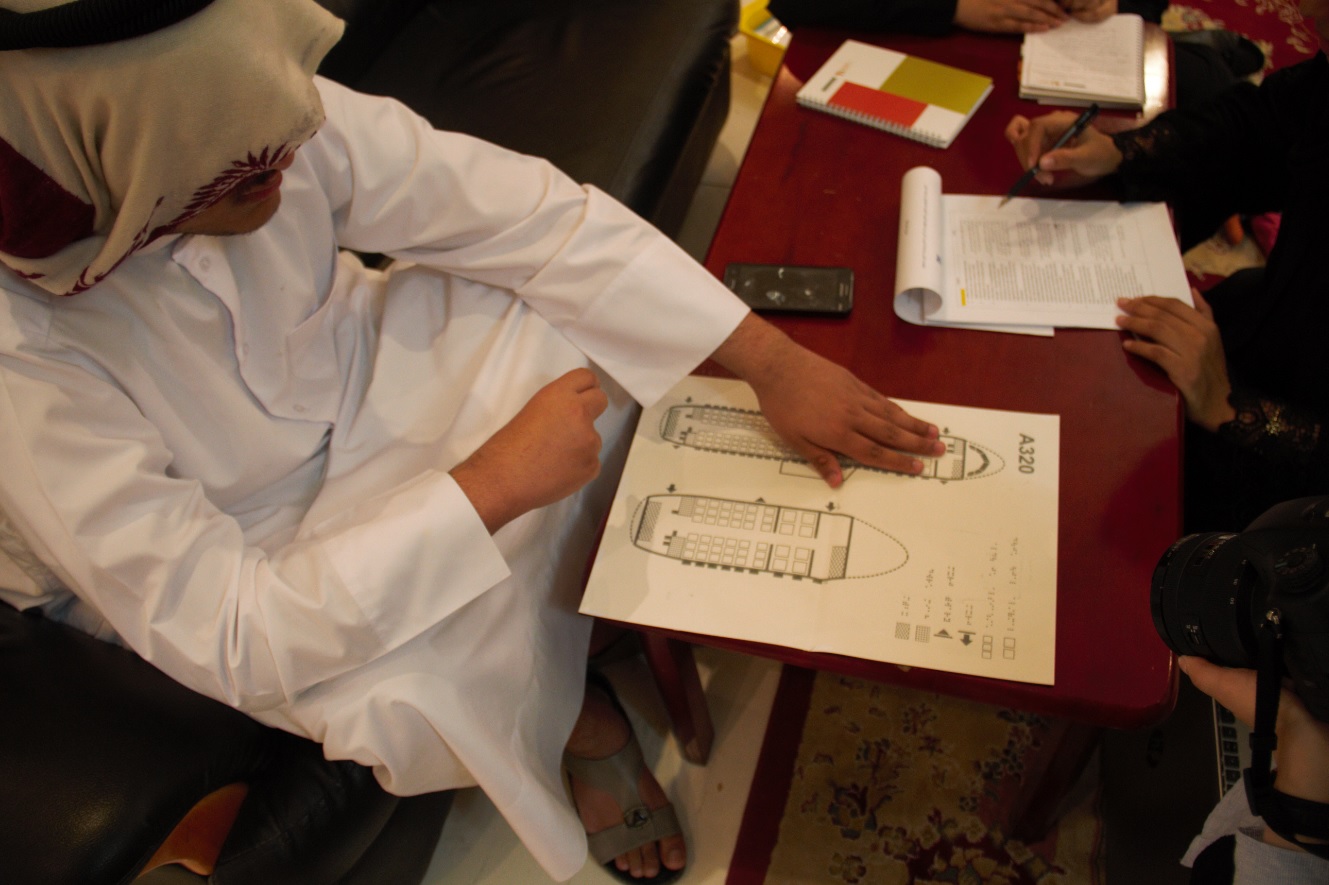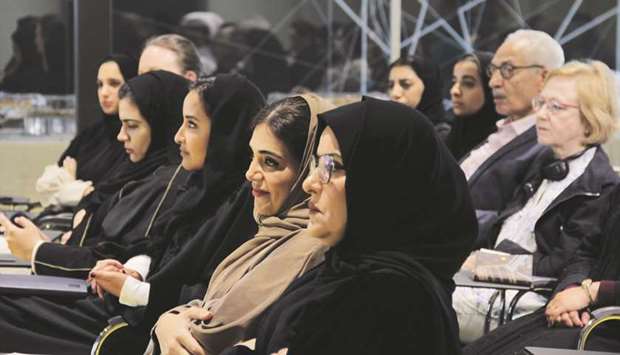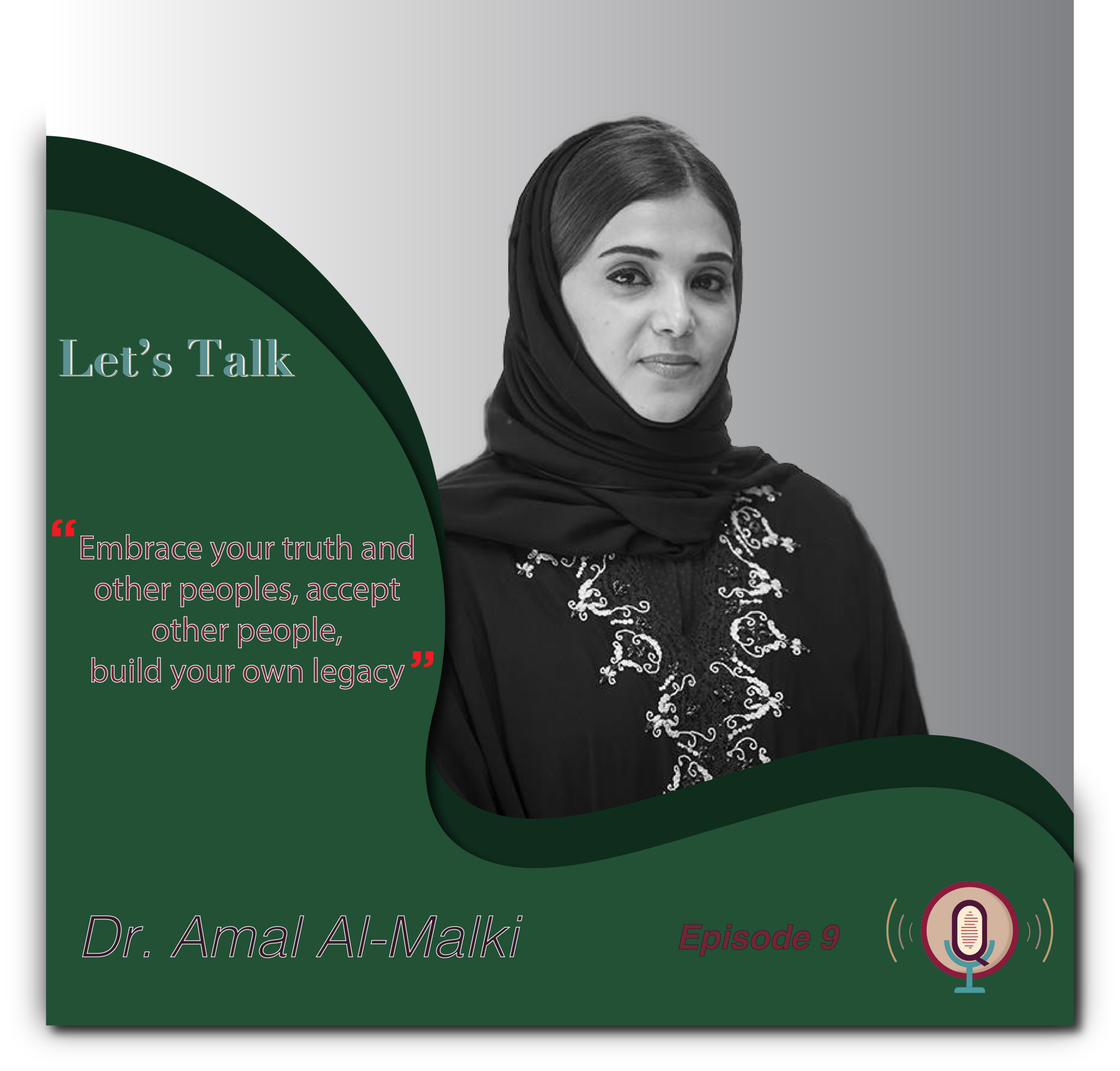In keeping with its vision to enrich society through transformative educational ex…

The Covid-19 pandemic has generally increased inequality in education for sight-impaired, hearing impaired, and learning disabled students in the Arab region. For a few students who face physical challenges, moving education to their homes has brought some benefits.
As is often the case, the situation varies enormously, from Gulf countries to middle-income countries such as Egypt, to poorer, more conflict-affected ones such as Sudan.
Laws have been passed to support inclusivity in education across the region, but experts say those laws need to be enforced and outdated campuses and policies must change. In the Gulf, where university campuses have often been built more recently, life for those with special needs is still a challenge, but less so than in those countries with old buildings, limited budgets, and a lack of disability-friendly transportation. Additionally, the need for technology and Internet connectivity has added another obstacle that excludes those from rural regions and poorer neighborhoods.
or some students, the new system of remote learning will “boost their self-esteem, because they will not be exposing their fragilities and will be achieving their goals,” says Amal Mohammed Al-Malki, the dean of the College of Humanities and Social Sciences at Hamad bin Khalifa University, in Qatar. “However, we must remember that like others, there will be those who will prefer learning in the traditional classroom. Learning is as much about socializing as it is about acquiring knowledge and there are people who prefer human contact to virtual exchanges. It will be a matter of personal preference, in the end.”
Al-Malki says that remote learning, if set up adequately, may also turn out to be an advantage to learners with milder intellectual disabilities. “Learning in the comfort of the home, with ample time to explore content and carry out activities can be very helpful. It is those with severe intellectual disabilities that may require extra attention,” she explains. Such students need support from a family member or a tutor.
The pandemic is allowing educators to experiment with new approaches, Al-Malki says, and so-called “special education” is being given a chance to reinvent itself. “The present circumstances are calling for a change in paradigm and in our beliefs about disabilities by showing us that that there are opportunities where we thought there were drawbacks,” she says. Remote learning is what gives educators the opportunity, she says, to center education on the learner.
Making Inclusivity Central
Hamad bin Khalifa University strives to make inclusivity a central pillar of the university, she says, from physical campus features to research agendas to courses and degrees. Training programs include methods for subtitling for the hard of hearing and audio description for sight-impaired students.
The United Nations estimates that 95 percent of children with disabilities in the Middle East and North Africa are excluded from school at the primary level, and that adults with disabilities, especially women, have less access to employment than their peers without disabilities.
“The disability movement in the Arab world has yet to herald the most important issue pertaining to people with special needs, that of raising awareness and eradicating the stigmatization twinned with disability,” says Al-Malki. “Although the topic of disability and mental health in the Arab world is discussed, the way it is addressed is profoundly controlled by socio-cultural norms and attitudes,” she adds.
One of the biggest challenges for students with or without disabilities, is that their learning environments are often not tailored to their needs. “Disability is often invisible and those students will face added challenges that will never be made known to others,” Al-Malki says. Students with severe learning disabilities rarely are able to enroll in higher education. Students may be misunderstood for behaviors or attitudes outside the mainstream, she explains. This is often true for students in the autism spectrum, or those who have dyslexia, among others.
“Unless effective systems are in place to identify such specific cases and staff are trained to deal with them, there will be very little that can be done to help,” she says. In the case of physical (or sensory) disabilities, which are visible, challenges include barriers such as stairways, heavy doors, poorly lit corridors, but also learning materials that are not adapted to such students’ needs.
“The lack of access in itself will make such students feel left out and discriminated against,” she says.
Nadera Alborno, an associate professor of education at the American University of Dubai and a specialist in accessibility to education, says Covid-19 has transformed education for those with disabilities in some parts of the Arab region: “It has the power to give students greater access to learning as well as more personalized and accessible learning experiences.”
The adaptations include virtual reality headsets, screen readers that recite text aloud, Braille typewriters, progressive software programs, touch screens, interactive displays and speech-recognition software. However, inequality has been exacerbated in poorer parts of the region by those who cannot afford devices, Internet connections and even electricity.
The American University of Dubai is home for some 90 students with unique challenges who go through detailed screening during the admission process. Student services and health services offices work together, with accommodations varying according to the needs of individuals, and with special arrangements for seating, exams, or digital devices when needed. “The physical accessibility of the campus has become a priority and it is a learning process with every new student that the university welcomes,” Alborno says.
Barriers in Sudan
People with disabilities represent about 4.8 percent of Sudan’s population, according to the National Coordination for Persons with Disabilities in Sudan, and about 14.4 percent of the disabled live in the state of Khartoum, where many Sudanese, including those with disabilities, migrate in search of education, work and services.
Fakhr El-Din Awad, head of the National Council for Persons with Disabilities in Sudan, says institutions specialized in educating people with disabilities can only accommodate 1 percent of all students with disabilities. “Even for those who are absorbed, many obstacles stand before them, preventing them from continuing in education.”
Muhammad Siddiq, 22, a student at the Faculty of Arts at Omdurman Islamic University, who suffered from polio at an early age, says there are no wheelchair ramps or elevators on the campus. “What hurts me the most is my sense that I am placing a heavy burden on my colleagues and overburdening them with the process of moving around in the classroom,” Siddiq says.
Policies to overcome this are essential, says Alborno, of the American University of Dubai. In the United Arab Emirates, the government initiated a universal design code in 2019 that provides the technical specifications for buildings, roads and transport systems to accommodate “people of determination,” the official term with a positive spin in the Emirates for those facing various physical challenges.
But Dubai and Sudan are worlds apart in the availability of public money for such projects.
In Sudan, Aisha Malik, an 18-year-old blind student, was unable to enroll in a public university’s college of education. “I was born blind and got grades that would qualify me to join the college of education,” she says, “but they refused this under the pretext of the lack of educational means for me and my inability to practice the teaching profession because of my disability.”
Awad, the head of the Sudanese council for people with disabilities, believes that private universities represent a bigger problem for students with disabilities, as there are usually no facilities at private universities designated for such students. Public universities also suffer from the lack of facilities with older buildings that lack wheelchair ramps, wide door frames and similar accommodations.
New Disabilities Law in Egypt
In Egypt, the Rights of Persons with Disabilities Law was issued in 2018, and it included seven articles on the rights of people with disabilities in higher and basic education, including forbidding universities from using disabilities as criteria for denying entry.
One hundred and twenty thousand disabled students are enrolled in schools that integrate disabled students with mainstream students or are in schools specifically for those with special needs. Yet only around 15 percent of those students reach higher education, says Hussein Safwat, a professor of education at Sohag University, in central Egypt.
In Cairo University, the percentage of students with disabilities does not exceed one-half a percent of the total enrollment, Safwat says, even though the number of people with disabilities in Egypt is believed to be about 2.2 percent of the population.
Experts fear Covid will reduce those numbers further. Safwat believes the law needs to be put into practice. “Although the law was passed two years ago, most Egyptian universities have not started working with it to meet the needs of students with disabilities, which is more critical than ever now,” he says.
In lower-income countries, Alborno says international intervention is needed. “International organizations, such as Unicef, need to step up in providing guidance and resources for improving equal access to learning in poor, less advantaged countries like Yemen,” she says.
As is often the case, the situation varies enormously, from Gulf countries to middle-income countries such as Egypt, to poorer, more conflict-affected ones such as Sudan.
Laws have been passed to support inclusivity in education across the region, but experts say those laws need to be enforced and outdated campuses and policies must change. In the Gulf, where university campuses have often been built more recently, life for those with special needs is still a challenge, but less so than in those countries with old buildings, limited budgets, and a lack of disability-friendly transportation. Additionally, the need for technology and Internet connectivity has added another obstacle that excludes those from rural regions and poorer neighborhoods.
or some students, the new system of remote learning will “boost their self-esteem, because they will not be exposing their fragilities and will be achieving their goals,” says Amal Mohammed Al-Malki, the dean of the College of Humanities and Social Sciences at Hamad bin Khalifa University, in Qatar. “However, we must remember that like others, there will be those who will prefer learning in the traditional classroom. Learning is as much about socializing as it is about acquiring knowledge and there are people who prefer human contact to virtual exchanges. It will be a matter of personal preference, in the end.”
Al-Malki says that remote learning, if set up adequately, may also turn out to be an advantage to learners with milder intellectual disabilities. “Learning in the comfort of the home, with ample time to explore content and carry out activities can be very helpful. It is those with severe intellectual disabilities that may require extra attention,” she explains. Such students need support from a family member or a tutor.
The pandemic is allowing educators to experiment with new approaches, Al-Malki says, and so-called “special education” is being given a chance to reinvent itself. “The present circumstances are calling for a change in paradigm and in our beliefs about disabilities by showing us that that there are opportunities where we thought there were drawbacks,” she says. Remote learning is what gives educators the opportunity, she says, to center education on the learner.
Making Inclusivity Central
Hamad bin Khalifa University strives to make inclusivity a central pillar of the university, she says, from physical campus features to research agendas to courses and degrees. Training programs include methods for subtitling for the hard of hearing and audio description for sight-impaired students.
The United Nations estimates that 95 percent of children with disabilities in the Middle East and North Africa are excluded from school at the primary level, and that adults with disabilities, especially women, have less access to employment than their peers without disabilities.
“The disability movement in the Arab world has yet to herald the most important issue pertaining to people with special needs, that of raising awareness and eradicating the stigmatization twinned with disability,” says Al-Malki. “Although the topic of disability and mental health in the Arab world is discussed, the way it is addressed is profoundly controlled by socio-cultural norms and attitudes,” she adds.
One of the biggest challenges for students with or without disabilities, is that their learning environments are often not tailored to their needs. “Disability is often invisible and those students will face added challenges that will never be made known to others,” Al-Malki says. Students with severe learning disabilities rarely are able to enroll in higher education. Students may be misunderstood for behaviors or attitudes outside the mainstream, she explains. This is often true for students in the autism spectrum, or those who have dyslexia, among others.
“Unless effective systems are in place to identify such specific cases and staff are trained to deal with them, there will be very little that can be done to help,” she says. In the case of physical (or sensory) disabilities, which are visible, challenges include barriers such as stairways, heavy doors, poorly lit corridors, but also learning materials that are not adapted to such students’ needs.
“The lack of access in itself will make such students feel left out and discriminated against,” she says.
Nadera Alborno, an associate professor of education at the American University of Dubai and a specialist in accessibility to education, says Covid-19 has transformed education for those with disabilities in some parts of the Arab region: “It has the power to give students greater access to learning as well as more personalized and accessible learning experiences.”
The adaptations include virtual reality headsets, screen readers that recite text aloud, Braille typewriters, progressive software programs, touch screens, interactive displays and speech-recognition software. However, inequality has been exacerbated in poorer parts of the region by those who cannot afford devices, Internet connections and even electricity.
The American University of Dubai is home for some 90 students with unique challenges who go through detailed screening during the admission process. Student services and health services offices work together, with accommodations varying according to the needs of individuals, and with special arrangements for seating, exams, or digital devices when needed. “The physical accessibility of the campus has become a priority and it is a learning process with every new student that the university welcomes,” Alborno says.
Barriers in Sudan
People with disabilities represent about 4.8 percent of Sudan’s population, according to the National Coordination for Persons with Disabilities in Sudan, and about 14.4 percent of the disabled live in the state of Khartoum, where many Sudanese, including those with disabilities, migrate in search of education, work and services.
Fakhr El-Din Awad, head of the National Council for Persons with Disabilities in Sudan, says institutions specialized in educating people with disabilities can only accommodate 1 percent of all students with disabilities. “Even for those who are absorbed, many obstacles stand before them, preventing them from continuing in education.”
Muhammad Siddiq, 22, a student at the Faculty of Arts at Omdurman Islamic University, who suffered from polio at an early age, says there are no wheelchair ramps or elevators on the campus. “What hurts me the most is my sense that I am placing a heavy burden on my colleagues and overburdening them with the process of moving around in the classroom,” Siddiq says.
Policies to overcome this are essential, says Alborno, of the American University of Dubai. In the United Arab Emirates, the government initiated a universal design code in 2019 that provides the technical specifications for buildings, roads and transport systems to accommodate “people of determination,” the official term with a positive spin in the Emirates for those facing various physical challenges.
But Dubai and Sudan are worlds apart in the availability of public money for such projects.
In Sudan, Aisha Malik, an 18-year-old blind student, was unable to enroll in a public university’s college of education. “I was born blind and got grades that would qualify me to join the college of education,” she says, “but they refused this under the pretext of the lack of educational means for me and my inability to practice the teaching profession because of my disability.”
Awad, the head of the Sudanese council for people with disabilities, believes that private universities represent a bigger problem for students with disabilities, as there are usually no facilities at private universities designated for such students. Public universities also suffer from the lack of facilities with older buildings that lack wheelchair ramps, wide door frames and similar accommodations.
New Disabilities Law in Egypt
In Egypt, the Rights of Persons with Disabilities Law was issued in 2018, and it included seven articles on the rights of people with disabilities in higher and basic education, including forbidding universities from using disabilities as criteria for denying entry.
One hundred and twenty thousand disabled students are enrolled in schools that integrate disabled students with mainstream students or are in schools specifically for those with special needs. Yet only around 15 percent of those students reach higher education, says Hussein Safwat, a professor of education at Sohag University, in central Egypt.
In Cairo University, the percentage of students with disabilities does not exceed one-half a percent of the total enrollment, Safwat says, even though the number of people with disabilities in Egypt is believed to be about 2.2 percent of the population.
Experts fear Covid will reduce those numbers further. Safwat believes the law needs to be put into practice. “Although the law was passed two years ago, most Egyptian universities have not started working with it to meet the needs of students with disabilities, which is more critical than ever now,” he says.
In lower-income countries, Alborno says international intervention is needed. “International organizations, such as Unicef, need to step up in providing guidance and resources for improving equal access to learning in poor, less advantaged countries like Yemen,” she says.
Link to the article
You may also check
Welcome to another episode of Qand…


